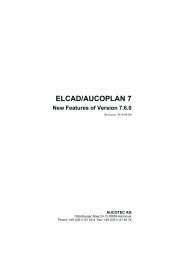
For instance, but not limited to, electrolyte cathode glow discharge (ELCAD), solution cathode glow discharge (SCGD), atmospheric pressure glow discharge (APGD), dielectric barrier discharge (DBD) Thus, the development of inexpensive but reliable miniaturized instruments has aroused great interest.Ĭurrently, miniaturized plasma technology has been rapidly developed and applied, due to its small size, low gas, low cost, and low power consumption. However, these instruments are usually cumbersome, expensive, high power consumption, and typically used in the laboratory.

#ELCAD 1 4 SERIES#
These instruments have a series of advantages such as high accuracy and multi-element analysis. Īt present, there are various large and mature instruments on the market for the determination of Hg, such as atomic absorption spectrometry (AAS), atomic fluorescence spectrometry (AFS), inductively coupled plasma atomic emission spectrometry (ICP-AES), inductively coupled plasma mass spectrometry (ICP-MS), etc. Therefore, it is extremely important to quantify the Hg content in food and related environmental samples due to the significant toxicity and biomagnification factors of Hg (up to 10 6). The WHO guidelines state that the health limit for Hg in drinking water is 1 μg/L. It has been reported that long-term consumption of foods contaminated with Hg could cause various neurodegenerative diseases such as amyotrophic lateral sclerosis, Alzheimer's disease, Parkinson's disease, and even death. Mercury (Hg) is an extremely high toxicity element, and Hg pollution has become a global environmental problem that has caused great damage to human health. The results showed good agreement with the certified values and values from direct mercury analyzer (DMA). The accuracy and practicability of HG-SAGD-AES were verified by measuring GBW09101b (human hair), GBW10029 (fish), soil and rice samples. Moreover, the correlation coefficient of the calibration curve was 0.9996 in the range between 0.1 and 10 μg/L.

Under optimal operating conditions, the detection limit for Hg 2+ achieved 0.03 μg/L, with a relative standard deviation of 1.1% at the Hg 2+ concentration of 5 μg/L. A thorough parametric evaluation of the HG and SAGD system was performed, including the type and concentration of carrier acid, He flow rate, concentrations of NaBH 4, discharge current and discharge gap. In this method, the mercury vapor generated by the HG was transmitted to the SAGD through the miniature hollow tungsten tube for excitation and detected by a miniaturized spectrograph. An innovative method for the ultrasensitive detection of mercury by solution anode glow discharge atomic emission spectroscopy (SAGD-AES) coupled with hydride generation (HG) was first investigated.


 0 kommentar(er)
0 kommentar(er)
